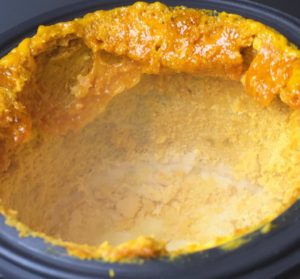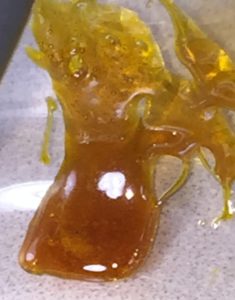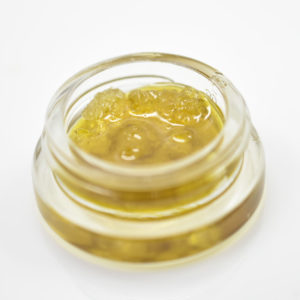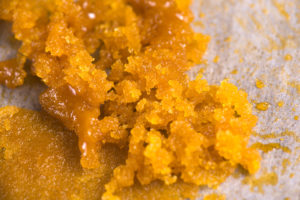Guest Post by Ben Cort
How do you convince someone that they really don’t know anything about something that they believe they know a great deal about? Seriously, if you wanted to explain to a bunch of strangers who don’t know you from the next guy that something they have held onto as fact just isn’t, how would you start? I’d start with a catchy and maybe somewhat inflammatory statement at the beginning of a long-form article with an eye-grabbing title, that’s how. After that, I would try to come up with a cleaver analogy paralleling this subject with something we all understand and know well, maybe even something as simple as liquid.
Of course, one could take it another route, you could go about by demonstrating to your audience that you are an expert on the issue, an internationally recognized thought leader who has written and lectured, maybe even on the TED stage, on the subject for years and has earned accolades from diverse groups all over the world. The problem with this approach is all that self-exaltation is off-putting as hell. People want to get right to the issue, not read bios. Besides, with Google, we just need to search someone to see what they have done—we don’t need them to tell us.
See, I have already wasted over 200 words and haven’t even started, so maybe this should have been a book after all. Okay, I’m done musing; let’s begin.
Unless you have purchased and consumed a marijuana-based product intended to intoxicate (not the CBD oil on Amazon or your hemp soap from Whole Foods) from a commercial establishment or “dispensary” in the last year or two, you don’t know about todays “weed.” You are operating under a construct about marijuana so antiquated, it’s irrelevant at best. I say, “at best,” because ignorance on a topic can lead people to ignore or even enable something that should not be ignored or encouraged, all the while thinking you know. For example, remember how long it took us to believe that we might not know all we thought we knew about cigarette smoke, or trans-fat, or global warming or Pee-Wee Herman? We thought we knew, but in hindsight we didn’t, and it would have been good to understand sooner.
This article is not going to try to explain everything you need to know on this subject, as marijuana is too large and complex; however, I hope it motivates you to research it further. All I want to do right now is to challenge us to change our language when talking about “weed.” We do a huge disservice to this conversation by limiting and muddling our vocabulary, using a few words to discuss an extremely diverse line of products and variations. We are no longer just deciding between indica and sativa; the world has radically changed since the industrialization of marijuana and so should our language.
We use word(s) like “weed” or “cannabis” or “marijuana” or “sticky-icky” loosely and often times without even knowing what it is we are referencing. “Weed” has changed so much in the last few years that saying “marijuana” is kinda like saying “liquid.” There’s a big difference between Orange Juice and whisky, hot coco, and kale juice. Get the picture? Imagine trying to communicate about liquid with only one word to distinguish what we were talking about:
“Dude, can you speak a bit more softly, I had like 18 cans of liquid last night.”
“I understand you aren’t feeling well; I want you to take two teaspoons of liquid and call me in the morning.”
“Mmmmmm, I think I’d like a glass of liquid with my steak please.”
“Don’t forget to pick up some liquid at the store honey.”
These statements are unclear and maybe even unsafe, right? It’s the same thing with weed.
For example, I remember when CNN’s Dr. Sanjay Gupta declared that “Weed stops seizures.” He made a big statement, which was more inaccurate than accurate. A better declaration would have been something like “The non-intoxicating component of the cannabis plant called CBD, manufactured by the Stanley Brothers into a serum called ‘Charlotte’s Web,’ shows promise treating a rare seizure disorder called Devrot Syndrome in several patients I met.” While a statement like this would have been much more accurate, it wouldn’t have driven viewership to CNN, hits on YouTube, or retweets. So, the headline reads in a much more general and simpler, yet more confusing, way. It’s time we started talking about “weed” in a more informed way; not confusing medicine with concentrated marijuana; differentiating between a plant that is smoked and an extract that is eaten; between an herb and a topical cream.
The reality is that in 2020 “weed” can be smoked, eaten, absorbed topically, inhaled, vaped, inserted into ones anus or vagina, drank, chewed, turned into paper and shoes and dropped into one’s eyes. It has taken on a diversity like “liquid”; yet our vernacular has not kept up. Let’s work now on expanding our shared vocabulary and mutual understanding.
Marijuana is a plant, often referred to as cannabis in scientific and now political circles. It’s a plant that we have interacted with for thousands of years. Traditionally, it grows in warm places and requires large amounts of water. If dried and smoked, can have a subtly intoxicating effect, especially the un-pollinized buds of the female plant.
In 2012, my home state of Colorado redefined marijuana when we passed constitutional amendment #64. Since then every state to pass “recreational” marijuana laws has followed suit, by legally defining marijuana as follows:
“MARIJUANA” OR “MARIHUANA” MEANS ALL PARTS OF THE PLANT OF THE GENUS CANNABIS WHETHER GROWING OR NOT, THE SEEDS THEREOF, THE RESIN EXTRACTED FROM ANY PART OF THE PLANT, AND EVERY COMPOUND, MANUFACTURE, SALT, DERIVATIVE, MIXTURE, OR PREPARATION OF THE PLANT, ITS SEEDS, OR ITS RESIN, INCLUDING MARIHUANA CONCENTRATE….”
In 2012, the voters of Colorado, somewhat unknowingly, changed the traditional definition of weed when we agreed to the language in A64 and many have followed suit. Since the new and legal way of defining “weed” has replaced the long-standing traditional meaning, I hope you get curious about terms likes “concentrates,” “resin,” “compounds,” “manufacture,” “salt,” “derivatives,” and “mixtures.” It means we can use the entire plant, change its form, and consume it in uncountable ways.
I’m going to give you some new words and attempt to describe them. I’m also throwing in a few pictures, because guys like me need pictures, and because some of this stuff is hard to imagine in your head. As always, you can probably learn just as much by a quick Google search (make sure to run “image” searches) or by spending some time on YouTube. If you want to see what it looks like to consume any of what follows, I can pretty much guarantee that there are dozens of YouTube channels dedicated to it.
Marijuana
Let’s start with an easy one: marijuana is weed; weed is marijuana. Cannabis is the scientific name. It is a plant that grows naturally in warm places with plentiful water. In its natural form, it contains less than .5% THC, or tetrahydrocannabinol, the part of the plant that gets you “high.”
Humankind has pretty much always interacted with this naturally occurring plant. We didn’t really smoke it until relatively recently—we used it for its medicinal properties, of which it has several. We also used it as a cash crop referred to today as “hemp,” but more on hemp later. Not too long ago, we started to mess with the genetics of the plant to help it grow better in colder climates and increase its intoxicating effects. At some point, somebody figured out that by increasing the THC, by means of rudimentary botany, it had a bit of a relaxing and even subtly intoxicating effect. Since some people like to get intoxicated, a few people got really into using, and eventually smoking, cannabis to get kinda, sort of, a little bit stoned.
In the early 70’s, we started to see a pretty consistent increase in the amount of THC being bred into weed. It went gangbusters, relatively speaking, between when Led Zeppelin was smoking it and when Snoop Dog hit the scene in the early 90’s. By the time Miley Cyrus picked it up, the THC percentage in marijuana had grown to an incredible average of around 12% nationwide. Marijuana potency had grown by a multiplier of 20-ish in 40-some years.
A while back I was giving a talk, and a young man asked me if I thought that marijuana had influenced music in a positive way. After getting a good laugh at the creativity of the question I told him that I thought it likely had. Plenty of the artists we now consider as “classics” consumed their fair share of yesterday’s weed. Personally, I do think the world is a better place because of “Purple Haze” and Pink Floyd, not to mention the activist genius of Bob Marley, all fellas who, I believe, enjoyed their weed. That is, weed in a more natural form (low THC).
Hemp
There is an old saying “the most dangerous thing about weed is getting caught with it,” which used to be pretty darn true. Back when we criminalized weed, we were really criminalizing hemp, and it is hard to argue it’s because the fellas in charge wanted to make more money on their textiles and put more people in jail. In the Farm Bill that just passed, “Hemp” was legally defined as having less than .3% THC, so todays Hemp was yesterday’s weed.
Hemp has lots of uses, but I’m not really an expert on them—ask a farmer. What I know is that it’s used as a tough and lightweight textile for items like my favorite pair of shoes.
Now, the trick with Hemp, and the reason that my buddies in law enforcement aren’t big fans, is that it looks VERY similar to marijuana. This allows the outlaws to grow marijuana in the perfect camo, a field bordered by hemp. Unfortunately, for the people whose job it is to keep weed out of the black market, hemp makes their task much harder.
CBD
This is the part of the cannabis plant with the medicine in it. It is super important to understand that CBD is totally nonintoxicating, as in completely. According to your nephew, CBD will fix everything from cancer to global warming. Many believe that we should basically get as much as we can into and on our bodies as often as possible. While a good deal of the benefits to CBD are simply anecdotal, it does have some validated medical value, and I wouldn’t be surprised that as we study it further, we find a few more. We know that CBD is an anti-inflammatory and a remarkable anti-convulsant. What we don’t know about CBD is how it interacts with other medications, long term effects, proper doses and concentrations, or the most effective delivery systems.
For all the good and potential good that we know and are learning about CBD, today’s market has one giant problem—nobody really knows what defines CBD. Scientifically, we know exactly what it is, how to isolate it, how to measure it, and even how to synthesize it. Practically, anything can be labeled CBD, because there is no federal oversight of this booming marketplace, which allows anybody to sell anything and claim it is CBD.
I have seen creams bought off the shelf at a grocery store and repackaged as “CBD.” There are people passing off liquids/edibles/oils/capsules, whatever, that contain trace amounts of CBD as “CBD-based” products. The marketplace has no definition of what justifies a product as being CBD based, which allows for just about anything to be passed off as CBD. This is a problem for a multitude of reasons—I’ll let you do the math.
Medical Marijuana
This is a tough one, and I’m pretty sure I’m going to frustrate lots of people, sorry. We have to define this somehow, and I believe there is one way to define medicine: a product that has been validated to have measurable and repeatable, specific effects on specific conditions by double -blind, placebo-controlled testing. Additionally, medicine comes with a dose and duration. Almost never is medicine used as much as one desires until one feels what one desires to feel. To be perfectly clear, there isn’t a medicine on earth that is smoked. You don’t smoke medicine, ever.
Using this definition, there are four forms of Medical Marijuana, or more accurately, “cannabis-derived medications”: Dronabinol and Nabilone, which both contain some THC, and Epidiolex and Sativex, which both contain no THC.
It is a dangerous thing when something can be dubbed “medicine” by popular vote; this is a standard we should stay far away from. There are plenty of reasons why this is the case. However, let me give the one I consider to be the most relevant: medicines have known side-effects. Think of the commercials for medications that run on TV—they are compelled to list the potential harms associated with that medication, some of which sound way worse than what the medication treats.
When we introduce powerful substances into our brains and bodies, there will be side effects. Right now, medical marijuana is being discussed without this important consideration. What we hear are nothing but success stories with little or no discussion of the harms, of which there are plenty. This is just irresponsible. If the pharma companies that produce our medications weren’t compelled to tell us the potential harms, do you think they would? By allowing medical marijuana to be defined by the companies and industry groups profiting on them to tell us nothing but the good, we are setting ourselves up for trouble. People, some of whom could be sick and dying, aren’t given the whole story—just the parts that sell.
It is past time that we not only separate “medical” from “recreational” when discussing marijuana, but we also get serious about advancing research into the medical properties of the plant.
Marijuana Concentrates
This is where it should get interesting. While most people don’t have any idea what a “concentrate” is, they have quickly become a major, if not predominant, part of the commercial marijuana market. For example, the last year that we have full sales data out of Colorado is 2019. That year we taxed the sale of just under 40,229 pounds of “concentrated marijuana.” While that might not seem like a lot, please understand that the manufactures encourage one to consume an amount “half the size of a pinhead or less.” The knee-jerk reaction from the industry is that people will moderate their use because concentrates are so strong. This belief misses the basic understanding we have about tolerance to THC. A quick YouTube search will show as many people as you want to watch consuming amounts more than 5 grams in one sitting.
Defining a concentrate is easy: it is a product where the THC is stripped from the organic plant material. This is most often done with a solvent that grabs the THC, such as butane or propane. It can also be done with gravity, compression, cold water, etc. Depending on how it is made, concentrates can take lots of forms, and they contain 40-99% THC. Now is a good time for you to scan back up to the definition of marijuana. In case you forgot, the plant in its natural form contains less than .5% THC. Concentrates, such as dabs, are up to 99% pure THC.
Since this kind of potency is so new, the scientific/medical community knows next to nothing about how these extremely potent products can affect the brain and body. However, I can tell you some stories based on my years of watching from the front row. I’ve seen enough to confidently say they are not doing any good. There is a growing body of evidence informing us about the risks of psychosis associated with higher potency marijuana products above 10% THC. Since this science is relevant on both the individual and societal levels, it really needs to be weighed carefully regarding concentrates.
The problem is concentrates are worth much more money than the plant, they are easy to make, and they result in much higher use rates; so, the marijuana industry loves them. Asking the industry to give up their concentrates is like trying to get my 15-year-old to eat broccoli—it just isn’t happening. They will go to the mat to keep this valuable and ever-growing piece of their market in stores.
While we have defined the category of concentrates, it’s important to understand the specific forms concentrates have taken today. This list will be outdated by the time you read it, but we must start somewhere
1. Wax
This is the stuff made from butane. It is less pure and looks like beeswax in its final form:

2. Shatter
Made from multiple filtrations of leftover resin, resulting in a thin, glass sheet that is easily “shattered”:

3. Sauce
Derived from a flash-frozen whole plant to preserve more than just the THC—the terpenes are also extracted, which is the part of the plant that gives off specific smells and tastes:

4. Live Resin
Also flash frozen and typically considered to have more flavor:

5. Solventless
As opposed to using things like butane and CO2, these are produced using techniques like gravity and cold-water reverse osmosis to extract THC:

6. Distillates
I think distillates are the future of the cannabis industry to some degree. They are very new and sell extremely well. They are front and center at most dispensaries and are fast becoming a favorite to vape and infuse into edibles. Distillates are THC isolated at the molecular level to allow the purest form of THC, the delta-9 (the most potent part of THC), to be consumed on its own. It is basically the world’s first pure form of non-synthesized THC testing as high as 99.9% THC.
Given that there is such a large variation in the potency of concentrates, it’s important to understand a few of the more popular forms. Since something the consistency of a jolly rancher can’t be rolled up and smoked like a joint, look for these to be consumed in dab rigs, vaporizers, smoked on a super-heated needle or nail, or in a glass pipe. Basically, think of other drugs that are consumed in rock form like crack, and you will understand how these are ingested.

Edibles
If you are like me, you think of an edible as a baked good, like a brownie or cookie; however, this understanding is extremely antiquated. As a rule, anything that can be introduced into the human body is being produced with THC, usually concentrated THC. These products are wide ranging. For example, the commercial market offers the following THC infused products:
Water, juice, lemonade, tea, coffee, honey, beer, soda, gummies, hard candies, soft candies, fudge, chocolates, ice cream, condiments, pills, topical intoxicating cream, suckers, gum, mints, breath spray, toothpicks, nasal spray, eye drops, candy bars, peanut butter cups, syrup, butter (allowing it to be cooked into anything), intimate oils, and even suppositories!
So, I hope this discussion of “weed” has expanded your mind and your understanding of today’s high potency THC marijuana products.
Before signing off, I want to give you one more thing to consider. In recent months, there has been some compelling validation of science that’s been around for a while, teaching us what “high potency” marijuana is doing to the mental health of users, which is even more pronounced in young people (Lancet Journal, March 19, 2019, Volume 6 Issue 5 p427-436, “The contribution of cannabis use to variation in the incidence of psychotic disorder across Europe: a multicenter case-control study”). In a nutshell, it’s scary. We continue to see the link between forms of marijuana with more than 10% THC established with dramatically increased risks of psychosis and other serious mental health problems. While the average user won’t experience these dramatic changes in mental health, a good number of consumers will. As a general rule, the likelihood of serious mental health issues caused by use increase based on four main factors: genetic predisposition (not much we can do about that), age of onset, frequency of use, and potency of the THC consumed. Just keep all of that in mind!
There you have it! You are an expert on all things weed! Now that you know, it is your responsibility to use this knowledge, change your vocabulary, and help those around you to change theirs. As an educated population, let’s start to speak more intelligently about this stuff. Weed has changed, so let’s change the conversation.



Hi there , my daughter suffered a cannabis induced psychosis in 2019 she has recovered 100% thankfully but it was 8 months of hell.
Are there any stats on young people using like 15-25 years old the percentage who would suffer psychosis. i.e one in a thousand, one in a 100, one in 10,000 etc
Reason I ask many many young people use hi potency THC but don’t go in to psychosis.
Thank you, great article and you’re right most think it’s plant base weed form the 70’s and 80’s
Doug
Hi, Doug. I’m so sorry that happened to your daughter but am grateful she is still with us! That’s a great question, and I don’t know the exact answer, because there are many factors such as age, product used, how often, etc. I do know that high-frequency, high-potency use at a young age results in a 5-fold increase in the risk of psychosis.
That was excellent. As Mark Twain said “it’s not so much what folks don’t know as what they know that ain’t so” and thanks to marijuana propaganda and the cheerleader news media that’s never more true than with the public’s marijuana “knowledge”.